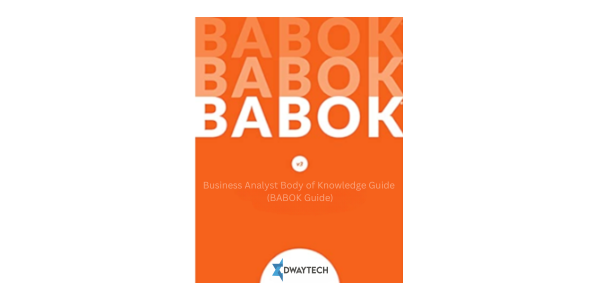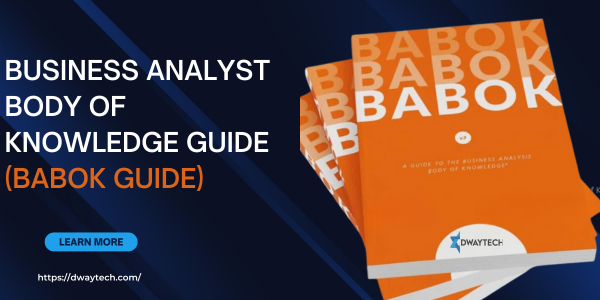Business Analyst Body of Knowledge: Business analysis is a crucial aspect of any organization’s operations, ensuring that business needs are identified and solutions are effectively implemented. In the realm of business analysis, the Business Analyst Body of Knowledge Guide (BABOK Guide) serves as a comprehensive resource, providing guidelines, best practices, and standard terminology for business analysts worldwide.
Introduction to the BABOK Guide
What is BABOK?
The BABOK Guide is a globally recognized standard that outlines the essential knowledge areas, tasks, and techniques required for effective business analysis. It serves as a reference for business analysts, guiding them through various stages of the analysis process.
Importance of BABOK in Business Analysis
BABOK plays a vital role in ensuring consistency and quality in business analysis practices. By following the guidelines outlined in the BABOK Guide, organizations can streamline their processes, enhance decision-making, and ultimately achieve better outcomes.

History and Development of BABOK
Origins of BABOK
The BABOK Guide was first introduced by the International Institute of Business Analysis (IIBA) in 2005. Since its inception, it has undergone several revisions and updates to reflect evolving industry standards and best practices.
Evolution over the years
Over the years, the BABOK Guide has evolved to encompass a broader range of topics and methodologies, reflecting the changing landscape of business analysis. Today, it serves as a comprehensive framework that addresses various aspects of the discipline.
Structure of the BABOK Guide
The BABOK Guide is structured around several key components, including knowledge areas, tasks, and techniques.
Knowledge Areas
The guide identifies six core knowledge areas, including business analysis planning and monitoring, elicitation and collaboration, requirements life cycle management, strategy analysis, requirements analysis and design definition, and solution evaluation.
Tasks
Within each knowledge area, specific tasks are outlined, providing a step-by-step approach to conducting business analysis activities effectively.
Techniques
The BABOK Guide also outlines various techniques that can be employed by business analysts to gather, analyze, and validate requirements.
Key Concepts in BABOK
Stakeholders
One of the fundamental concepts in BABOK is the identification and management of stakeholders. Understanding the needs and expectations of stakeholders is essential for successful business analysis outcomes.
Requirements
Requirements lie at the core of business analysis, serving as the foundation for solution development. BABOK guides eliciting, documenting, and managing requirements throughout the project lifecycle.
Competencies
BABOK identifies the core competencies required for effective business analysis, including analytical thinking, problem-solving, communication, and stakeholder management skills.
Benefits of Following BABOK
Standardization
By adhering to the guidelines outlined in the BABOK Guide, organizations can standardize their business analysis practices, ensuring consistency and quality across projects.
Improved communication
BABOK provides a common language and terminology for business analysts, facilitating better communication and collaboration with stakeholders and project teams.
Career development
Following BABOK can enhance the professional development of business analysts, providing them with the skills and knowledge needed to advance their careers in the field.
BABOK Certification
Overview of certification levels
The IIBA offers various certification levels based on the BABOK Guide, including an Entry Certificate in Business Analysis (ECBA), Certification of Capability in Business Analysis (CCBA), and Certified Business Analysis Professional (CBAP).
Importance in the industry
BABOK certification demonstrates proficiency in business analysis and is highly regarded by employers in the industry, enhancing job prospects and credibility as a business analyst.
Application of BABOK in Business Analysis
Real-world examples
Numerous organizations across various industries have successfully applied the principles and techniques outlined in the BABOK Guide to improve their business analysis practices and achieve better outcomes.
Case studies
Case studies highlighting the application of BABOK in different contexts can provide valuable insights into its effectiveness and practical utility.
Challenges in Implementing BABOK
Resistance to change
One of the primary challenges in implementing BABOK is overcoming resistance to change within organizations accustomed to different methodologies or practices.
Complexity
The comprehensive nature of the BABOK Guide can sometimes be overwhelming for practitioners, particularly those new to the field of business analysis.
Future Trends in BABOK
Incorporation of new methodologies
As the field of business analysis continues to evolve, the BABOK Guide is likely to incorporate new methodologies and approaches to reflect emerging trends and best practices.
Adaptation to technological advancements
Technological advancements such as artificial intelligence and automation are expected to influence the practice of business analysis, necessitating updates to the BABOK Guide to accommodate these changes.
Conclusion
The BABOK Guide serves as a valuable resource for business analysts, providing a comprehensive framework for conducting effective analysis and delivering successful outcomes. By adhering to the principles and guidelines outlined in the guide, organizations can enhance their business analysis practices and achieve their objectives more efficiently.
FAQs
1. What is the BABOK Guide?
The BABOK Guide is a globally recognized standard that provides guidelines, best practices, and standard terminology for business analysts.
2. What are the key components of the BABOK Guide?
The BABOK Guide comprises knowledge areas, tasks, and techniques that serve as the foundation for effective business analysis.
3. Why is BABOK certification important?
BABOK certification demonstrates proficiency in business analysis and enhances job prospects and credibility within the industry.
4. How can BABOK be applied in real-world scenarios?
BABOK principles and techniques can be applied in various industries to improve business analysis practices and achieve better outcomes.
5. What are the future trends in BABOK?
The BABOK Guide is expected to incorporate new methodologies and adapt to technological advancements to remain relevant in the ever-changing landscape of business analysis.
Also, Useful Links:
Business Analyst Training Course Online Request Demo










